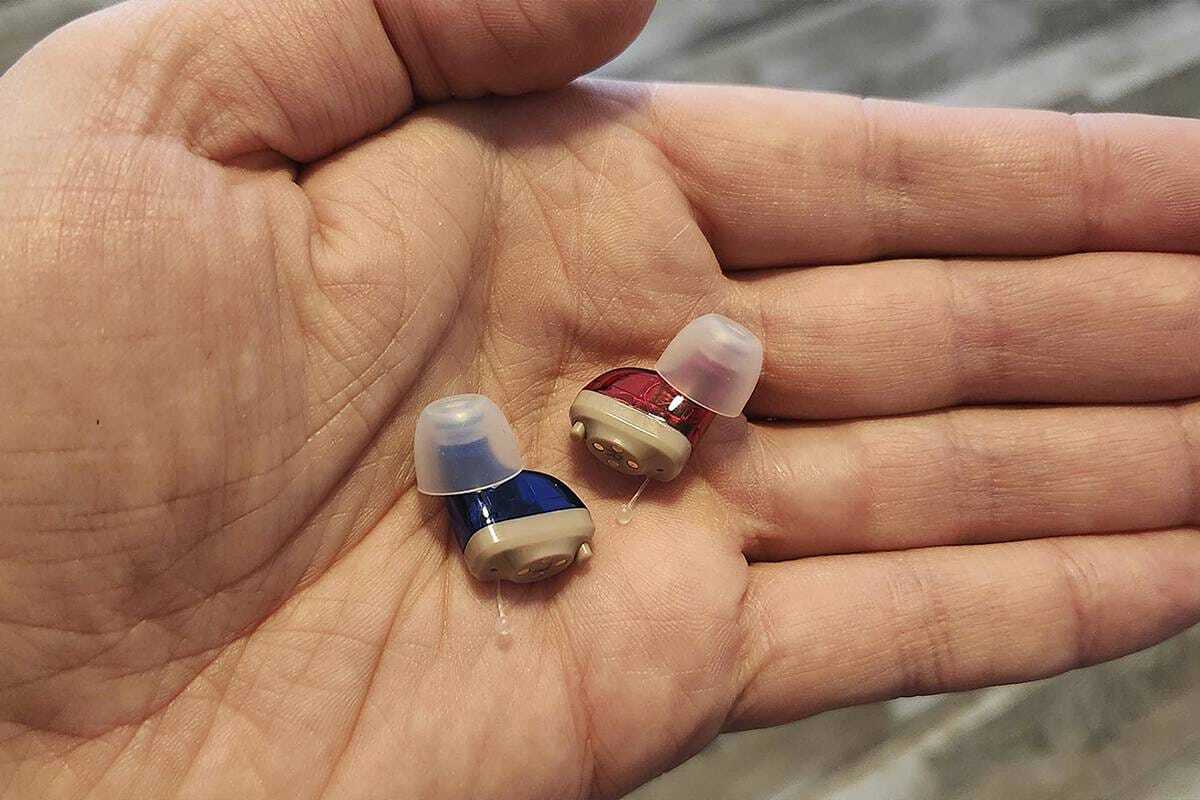The Daily Valet. - 11/19/25, Wednesday
Wednesday, November 19th Edition |
 | By Cory Ohlendorf, Valet. EditorCould you use a little more sunshine? |
Today’s Big Story
A Bright Idea
Bright light boxes mimic natural light … do they really help with seasonal depression?

It’s practically a surprise every year … November rolls around and suddenly, it’s getting dark at like 4:45 p.m. Really?! Feeling a bit down when the days become shorter is totally normal, but if your change in mood is more pronounced, it’s possible you have seasonal depression.
Officially called Seasonal Affective Disorder (SAD), the mood disorder is experienced by an estimated 5% of Americans every year. It’s characterized by a long list of symptoms, similar to those of depression, that usually occur in fall and winter “due to the shortening in day length and lower light intensity,” according to Hanne M. Hoffman, an assistant professor at Michigan State University who studies how light affects our physiology.
The most common treatment for SAD is light therapy, a.k.a. “SAD lamps”. These lamps are specially “designed to mimic sunlight” and when used correctly, can cause chemical changes in the brain, tricking it into thinking it’s summer so it will release much-needed serotonin. But do they really work? Since SAD lamps aren’t regulated by the FDA, it’s important to not just buy the cheapest thing on Amazon or the thing that’s more portable.
Researchers have been studying light therapy for decades. In 2006, Dr. Lam and his team published a small clinical trial on patients with seasonal depression that found that light therapy was about as effective as the antidepressant Prozac at improving their moods. More recent analyses of clinical trials on light therapy, including one published last year, backed up the theory. “The research is really quite compelling,” one professor of psychiatry and behavioral sciences told the New York Times.
If you decide to try using a SAD lamp, experts offered several tips. Use a lamp with enough brightness to do the job (we’re talking 10,000 lux). The best time to use one is in the morning—sitting or standing with the lamp about 12 to 24 inches from your face for about half an hour should improve your mood and help you feel less sluggish.
Buy One: | This lamp by Carex, a company whose products are often used in light-therapy research trials, is the most recommended lamp to use. |
Dismantling the Education Dept.
The agency will outsource and move some grant programs and several offices to other federal departments
The U.S. Education Department is handing off some of its biggest grant programs to other federal agencies as the Trump administration accelerates its plan to shut down the department. It represents a major step forward for the dismantling of the department, which has mainly involved cutting jobs since President Donald Trump called for its elimination with an executive action in March.
Secretary of Education Linda McMahon touted the “bold action” her agency is taking to accomplish the mission of putting herself out of a job. Under the agreements, the Office of Elementary and Secondary Education’s programs as well as sections of the Office of Postsecondary Education, including higher education grant programs and institution-based grant programs, will be co-managed by the Department of Labor, reports ABC News. The interagency agreements are outsourcing six offices to other agencies, including those that administer $28 billion in grants to K-12 schools and $3.1 billion for programs that help students finish college.
McMahon and her backers advocate a shake-up of the federal education role, saying that falling test scores show the agency is not delivering and arguing that Americans are tired of government bureaucracy. Meanwhile, the statutory offices that resolve civil rights complaints, serve students with disabilities, and handle the nation’s $1.6 trillion student loan portfolio were not included in Tuesday’s announcement but the senior department official did not rule out future moves.
FYI: | National Parents Union President Keri Rodrigues called the partnerships a "disaster," calling on lawmakers to defend students impacted by the partnerships. |
|
Snapchat Rolls Out ‘Topic Chats’
The new feature makes it easier to comment publicly on things you’re interested in
Snapchat, a platform long known for private, disappearing messages, is stepping into a new era with the launch of “Topic Chats”, a feature designed to let users participate in public conversations without sacrificing their privacy. The rollout marks one of the most significant expansions of Snapchat’s social experience in years, giving users a space to discuss everything from Formula 1 races to reality shows like Below Deck.
According to TechCrunch, profiles will remain private to anyone you’re not friends with, helping prevent unwanted friend requests or direct messages. While a user’s display name will be visible next to their message, others won’t be able to tap through to their profile from a Topic Chat. And unlike usernames, display names can’t be used to search for someone. Snapchat told TechCrunch that it will use LLM technology and other safety measures to moderate Topic Chats to keep them safe and appropriate.
Topic Chats are set to go live in the coming weeks, and will appear in Chat shortcuts and the Stories page, as well as when searching or viewing Spotlight videos. The feature, which is coming to Canada, New Zealand and the U.S. first, will appear in different areas of the Snapchat app in the shape of a big yellow button that says "Join the Chat". Tap it and you’ll join that conversation, where you can also browse related Spotlight videos.
FYI: | Currently, Snapchat has over 477 million daily active users. |
2025’s Word of the Year
Cambridge Dictionary’s annual announcement captures an ‘unhealthy’ modern phenomenon
I can’t believe we’re talking about 2025 coming to an end already, but as the year draws to a close, the lexicographers and linguists at the world’s most used and well-known dictionaries have begun their sometimes polarizing annual ritual of trying to capture the current zeitgeist through a single word.
While the Collins English Dictionary crowned “vibe coding” as their term of the year, Dictionary.com chose a number rather than a word. Last month, they selected the buzzy teen-favorite 67 (pronounced “six-seven,” not “sixty-seven”) after analyzing troves of data including headlines, social media trends and search engine results. However, it seems like most people are paying attention to the Cambridge Dictionary’s announcement.
The dictionary, which has published a word of the year since 2015, chose “parasocial”, a word that was first coined in 1956, but has never been more topical than right now. It’s used to describe a connection that people feel with someone they don’t know—or even with an artificial intelligence. “Millions of people are engaged in parasocial relationships; many more are simply intrigued by their rise,” Colin McIntosh, the lexical program manager for Cambridge Dictionary, told CBS News. “Parasocial trends take on a new dimension as many people treat AI tools like ChatGPT as ‘friends,’ offering positive affirmations, or as a proxy for therapy.”
|
Partner
Why 217,000+ People Switched to Oricle Hearing Aids
Customers everywhere are going nuts over Oricle Hearing Aids. And once you try them, you’ll “hear” why. These virtually invisible hearing aids are designed for everyday life, giving you crystal-clear sound that makes conversations easier and your favorite shows more enjoyable. Forget expensive audiologist appointments and confusing prescriptions. With Oricle, you get reliable, OTC hearing aids for under $100 with wireless charging included. Over 217,734 happy customers are already hearing the difference and saving thousands in the process. Don’t let high costs hold you back and experience better hearing the easy way.
| |||||||||





